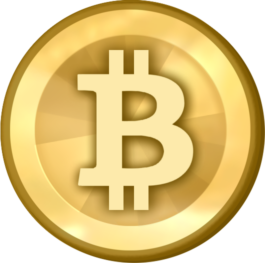Bitcoin and Blockchain
You’ve probably heard of bitcoin – or should it be capitalized, Bitcoin? – and if you’ve gone further into it you’ve heard of Blockchain, or blockchain. These are words that a lot of people have heard and don’t understand. But bitcoin sounds like money, that’s the only thing everyone knows for sure.

Ok, here's how it works. If you buy bitcoins you don’t receive physical coins. What you get is an entry in a ledger kept on the internet, an entry that says you have that many bitcoins and only you can access and spend themBitcoin – an internet ledger entry representing the monetary value which the buyer paid in conventional money for the entry – is the brainchild of a person or group of people going by the name Satoshi Nakamoto. Bitcoins became available in January, 2009, and you could have bought one for $2.89. The value of bitcoin rose rapidly over the next eight years and by the end of 2016 buyers were paying around $1,000, an astonishing 300-fold increase!
Then the real fun began. In the next twelve months bitcoin soared to about $20,000. Now, you know what’s coming next. Like the tulip bulb mania in 1637, people stopped buying, owners began selling, and the market for Bitcoin fell in a steep jagged plunge. That’s been the history of bitcoin ever since, rising to previously unimaginable enriching heights and falling to scary, impoverishing lows. As 2024 rolled into 2025 bitcoin was bouncing around $1,00,000 dollars.
Bitcoin had been designed as a medium of exchange, a global internet currency, but instead it had clearly become an asset, like tulip bulbs, coffee beans or Impressionist paintings, a thing people were buying with the expectation that they could turn around and sell it at a higher price later.
Bitcoin had been designed as a currency that would facilitate global trade without the use of middlemen. Conventional currencies work well enough, but to use them in national or global trade means using of banks, and paying banks for their service adds to the cost of doing business. Furthermore, governments can manipulate and in some measure control the flow of currencies, and that can bring unpredictable costs to business, too. What makes, or made, bitcoin so attractive is that it isn’t controlled by anyone.
Not only that. Bitcoin transactions are done without banks or governments even seeing what’s going on. The transactions are extremely secure. The system which is used to keep the ledger online, safe and private, is called blockchain.
When you purchase bitcoin, that transaction is recorded in the online ledger and the record of that transaction is distributed to other computers in the blockchain network and validated by certain protocols to becomes part of an ongoing chain of transactions. You receive a unique digital “key” that gives only you access the your account. If you forget it or lose the paper on which you wrote it down, there’s no way to recover or regenerate it.
Now you can use your bitcoin account to buy something – say, a commodity like rice – from a person who sells rice and accepts bitcoin in exchange. By the rules of the blockchain game, the record of your bitcoin disbursement must refer to the earlier record whereby you acquired those bitcoin funds. Your current transaction, paying to purchase something, is gathered into a block with other transactions and that block has a cryptographic reference to a previous block and an encrypted digital “fingerprint.” When it’s completed, the block is sent to the other computers in the network and becomes part of the blockchain.
Putting together a block of bitcoin transactions requires a lot of heavy mathematical lifting and an enormous amount of computer time. The end product is a series of blocks of transactions chained together in such a mathematical way as to make them extremely secure from hackers, thieves and governments. A ;ot of ordinary people have chosen to invest in bitcoin in the hope it will rise in value and, of course, international drug cartels, terrorist organizations and anyone who wants to move money around without it being tracked,they all use it too. In 2021 El Salvador adopted bitcoin as legal tender. As 2024 rolled into 2025, the president-elect of the United States, Donald Trump, named crypto advocate Paul Atkins as his pick for chair of the Securities and Exchange Commission and said he was going to make the United States the “crypto capital of the planet.” And bitcoin value hovered around one hundred thousand.